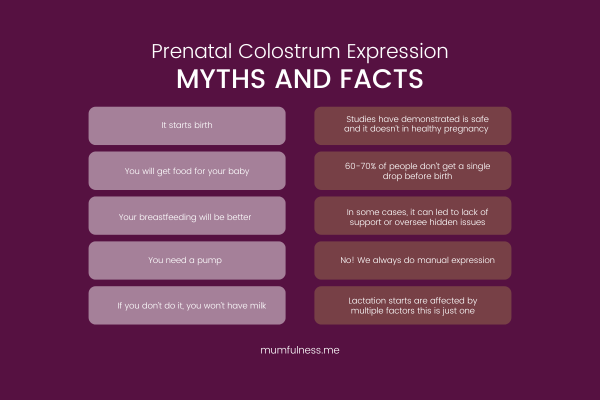Prenatal colostrum expression has become a standard recommendation across Neuvola clinics in Helsinki and throughout Finland. If you’re pregnant and around 35–37 weeks, you’ve probably received syringes and an instruction sheet from your midwife. You might be wondering: Is this necessary? Is it safe? Does this mean someone thinks I won’t be able to breastfeed? And if you don’t have a lactation consultant close to you, you maybe feel lost.
Let’s break down what prenatal colostrum expression really is, when it’s helpful, and why a clear, evidence-based understanding matters—especially when prenatal education is lacking.
What is prenatal colostrum expression?
Prenatal colostrum expression is the manual expression of colostrum (the first milk your breasts produce) before birth, usually after 36 weeks of pregnancy.
- It’s done by hand, not with a pump.
- The small amount of colostrum collected is stored in sterile syringes and frozen.
- It can be offered to your baby after birth, especially if they need extra support with feeding.
Contrary to outdated beliefs, colostrum expression does not induce labor in healthy pregnancies. A 2017 study published in The Lancet (DAISY study) confirmed its safety for low-risk individuals.

When is prenatal colostrum expression useful?
Short answer? When there’s a possible medical reason that could make those early breastfeeding hours a bit trickier than usual. If you are in any of these situations, this is a good moment to reach out to a lactation consultant, because preparation is more than just prenatal colostrum expression!
Here are a few of the most common situations:
- Gestational diabetes: Sometimes babies are born with low blood sugar and might need a bit of extra milk right after birth. Having your own colostrum ready means you might not need to use formula.
- Planned cesarean birth: We know scheduled C-sections can delay the start of milk production. Having colostrum on hand gives you a small backup plan for those first feeds.
- Expected separation after birth: If there’s a chance you and baby won’t be together straight away—like if they need to go to NICU—this can impact milk supply. Skin-to-skin is magic for milk, so having colostrum ready can help bridge the gap.
- Known or suspected feeding challenges: Like if your baby might have a cleft palate, tongue-tie, or is expected to be premature. These things can make latching harder in the beginning.
In all these cases, having a little colostrum collected in advance can help reduce the need for formula and support your baby’s immunity and gut health in those important first hours.
But again—this is about preparing just in case, not because something’s wrong with you or your body.
What Neuvola Doesn’t Tell You
Neuvola currently presents prenatal colostrum expression routinely, not based on medical need. This can create confusion, pressure, and unnecessary worry.
Here’s what most families are not told:
- 60–70% of pregnant people won’t get any drops of colostrum during prenatal expression. That’s totally normal.
- Trying and not getting results can feel like failure—especially without proper education or context.
- It’s not a predictor of future milk supply or breastfeeding success.
- Unfortunately, this practice is often promoted because of systemic gaps in Finnish postpartum care:
- Hospital postpartum staff often have limited time or training to support early breastfeeding challenges.
- The current priority in many hospitals is early discharge, and providing “extra” feeds can reduce newborn weight loss and speed up going home.
- This doesn’t always mean breastfeeding is off to a good start—and many families are left feeling overwhelmed once they’re home.
